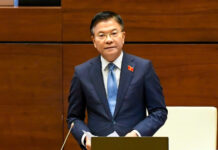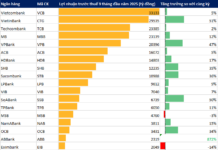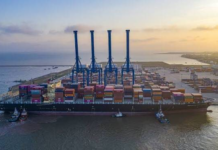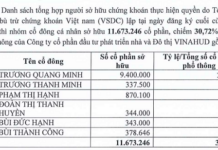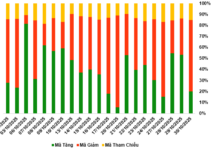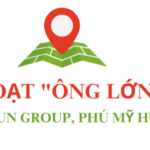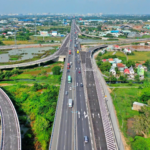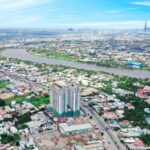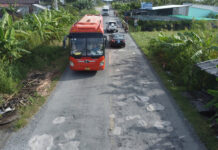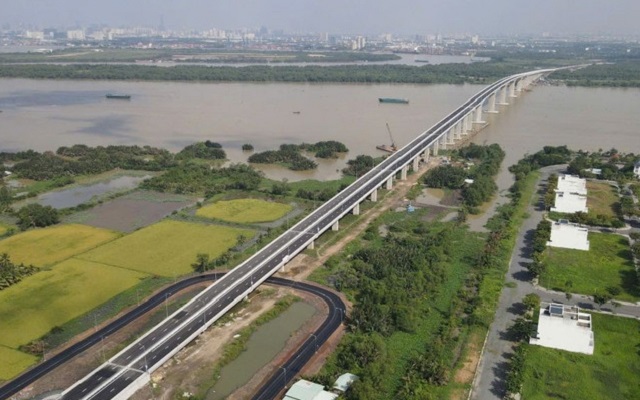
The Nhon Trach Bridge connecting Ho Chi Minh City and Dong Nai Province, part of Component Project 1A of Ho Chi Minh City’s Ring Road 3, is officially opened to traffic. (Photo: Sy Tuyen/VNA)
|
Currently, there is a clear differentiation in the disbursement progress of public investment capital among the southern provinces and cities.
While some localities have achieved positive results with high disbursement rates, many others are still facing challenges due to obstacles in site clearance, shortages of construction materials, and slow project implementation.
The provinces and cities in the region are making efforts to remove bottlenecks and aggressively speed up the progress to ensure disbursement targets and create momentum for the development of socio-economic infrastructure.
Accelerating Disbursement
According to the An Giang Department of Finance, by the end of July 2025, the province had disbursed VND 5,944 billion, reaching 22.2% of the plan assigned by the Provincial People’s Council and 27.9% of the plan assigned by the Prime Minister.
Some units have performed well, even surpassing the national average (43.9%) such as the Provincial Police, Kien Giang Vocational College, Forest Protection Department, Social Policy Bank Branch, and Oc Eo Relic Management Board.
However, the province still has 68 projects facing difficulties with a total capital of more than VND 8,110 billion, accounting for over 30% of the plan. The main obstacles lie in site clearance, scarcity of construction materials, and slow construction progress. In addition, several large-scale projects in An Giang are underway, including the Chau Doc-Can Tho-Sóc Trăng Expressway, the Rach Gia-Hon Dat-Kien Luong coastal road, and the urgent upgrade and expansion of Provincial Road 948, among others.
Moreover, the projects serving the APEC 2027 Summit in Phu Quoc are also awaiting the issuance of unit prices by the Provincial People’s Committee to ensure timely progress.
According to the People’s Committee of Vinh Long province, by the end of August 2025, the locality had disbursed only VND 6,668 billion, achieving 33.94% of the capital plan of VND 19,650 billion. There are 87 projects that have not yet started, 28 projects with no disbursement, 7 ongoing projects with a disbursement rate of less than 30%, and 5 projects awaiting approval for site clearance compensation plans.
The main reason for this situation is the large volume of site clearance, affecting many households, which has led to complaints during the land retrieval process. Additionally, there is a shortage of construction materials, and some localities have not been proactive in providing compensation and resettlement support.
The Project Management Boards of the agricultural and transport sectors have reported a lack of sand and stone and proposed extending the exploitation period of some mines until 2030, as well as enhancing resource sharing with neighboring provinces.
In contrast to the above two localities, Tay Ninh province has become a bright spot in public investment disbursement. According to the Ministry of Finance, the province’s plan for 2025 was VND 16,948 billion, and by the end of July 2025, it had disbursed VND 9,166 billion, reaching 54.1% of the plan and 57.9% of the plan assigned by the Government.
Tay Ninh ranked 11th out of 34 provinces and cities nationwide. Notably, out of 48 units assigned as investors, 22 units achieved a disbursement rate of over 50%, indicating a balanced distribution across projects rather than a concentration on a few large-scale ones.
This remarkable result stems from the resolute direction of the provincial leaders. Mr. Nguyen Van Ut, Chairman of the Tay Ninh People’s Committee, has repeatedly emphasized the approach of “no waiting, no prolonging procedures; once a project is completed, disbursement and settlement will follow immediately.”
Furthermore, the province has implemented the “6 Clear” principle: clear personnel, clear tasks, clear responsibilities, clear authority, clear timelines, and clear results. This approach compels departments, sectors, and localities to enhance their sense of responsibility and proactively address difficulties, thereby accelerating progress.
The swift disbursement progress has enabled Tay Ninh province to narrow the infrastructure gap and gain a competitive edge in attracting investment. With the completion of major projects such as the Ho Chi Minh City-Moc Bai Expressway and the Ring Road 3, the province will transform from a “peripheral” area into a “central” hub in the connectivity of the Southeast region, offering significant growth opportunities for agriculture, processing industries, and tourism.
Implementing Comprehensive Solutions
To achieve the target of 100% disbursement of public investment capital in 2025, An Giang province needs to disburse approximately VND 4,000 billion each month, equivalent to VND 135 billion per day, which is a formidable task.
Mr. Ho Van Mung, Chairman of the An Giang People’s Committee, has instructed each investor to establish a roadmap and commit to a weekly, monthly, and quarterly disbursement schedule.
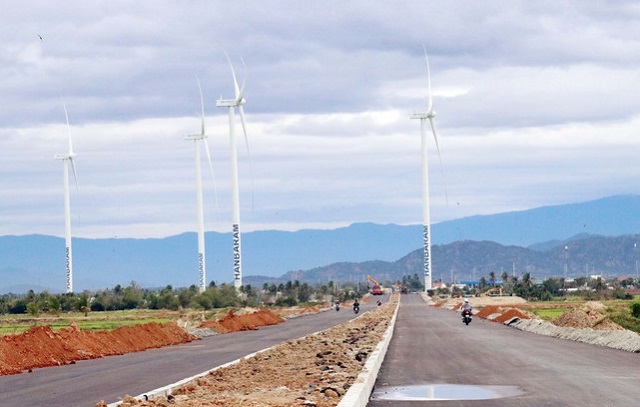 The Provincial Road 702, constructed with public investment capital, connects Bac Son commune (Thuan Bac district) with National Highway 1A and is nearing completion. (Photo: Cong Thu/VNA)
|
In September 2025, if a project fails to ensure progress, the An Giang Department of Finance will advise on transferring capital to urgent projects with the potential for completion within the year. For projects facing site clearance issues, investors must directly coordinate with the People’s Committees of communes and wards to handle them, ensuring compliance with compensation policies and resolutely addressing any procrastination.
The provincial leadership affirmed that with a resolute spirit, synchronized solutions, and the involvement of the entire system, An Giang is determined to accomplish the capital plan and create a driving force for socio-economic development.
In Vinh Long, Mr. Dang Van Chinh, Vice Chairman of the Provincial People’s Committee, has requested that departments, sectors, localities, and investors enhance their sense of responsibility and strengthen coordination in implementation and supervision.
He emphasized the need for constant communication with contractors to closely monitor progress and promptly address challenges. All bottlenecks in appraisal, contractor selection, site clearance compensation, and settlement must be thoroughly resolved, ensuring transparency and openness.
In Tay Ninh, the People’s Committee has recently issued a document directing investors, Project Management Boards, and relevant departments to focus on synchronously implementing solutions to strive for 100% disbursement of the planned capital. Priority is given to important national and regional transport projects in the province.
Specifically, the Ho Chi Minh City Ring Road 3 project must ensure technical passage in 2025 and complete the entire project in 2026. For the Ho Chi Minh City Ring Road 4, the Long An Project Management Board for Transport Construction Investment needs to expedite investment preparation, especially compensation and resettlement, while also finalizing procedures for calling investment in the form of PPP.
For Component Project 4 of the Ho Chi Minh City-Moc Bai Expressway passing through Tay Ninh province, a review of the total investment is required to adjust and allocate capital appropriately.
Tay Ninh sets the goal of achieving a disbursement rate of over 75% for important projects by the end of the third quarter of 2025 and 100% by the year-end. The locality requires investors to develop detailed plans and collaborate with contractors to complete payment dossiers so that the Treasury can promptly control the flow of capital. At the same time, the province strengthens inspection and assigns clear responsibilities; any delays will be subject to criticism, and units that proactively resolve difficulties will be commended.
The Tay Ninh People’s Committee also directs compensation units to coordinate in mobilizing people’s agreement with policies and land prices, while the Department of Agriculture and Environment takes the lead in advising on appraisal methods and compensation plans.
To prevent material shortages, Tay Ninh allows increasing the mining capacity of mines while enhancing the management of mineral transportation for construction./.
Hong Dat
– 16:27 09/03/2025
The Northern Powerhouse: Unlocking Vietnam’s Real Estate Potential with Billion-Dollar Infrastructure
The real estate market in Bac Ninh has cooled down significantly since its “hotspot” days in February and March of 2025.
The Data-Driven Insight into Real Estate Around Key Infrastructure
“Location, location, location” is a well-known mantra in the real estate industry, and for good reason. But it’s not just about the present location; it’s about the future potential of that area. A property’s value is influenced not only by its physical attributes but also by its “future prospects.” This includes prime locations, convenient transportation links, well-developed infrastructure, transparent legal frameworks, and the economic growth potential of the surrounding region. These factors create a foundation for sustainable value appreciation and are key considerations for savvy investors and homeowners alike.
The Airport’s Connectivity Concerns: Expert Views on Long Thanh’s Infrastructure Challenges
The highly anticipated Long Thanh International Airport is racing against time for its grand opening in 2026. While the airport’s construction is on overdrive, concerns linger about the supporting infrastructure. Experts worry that the surrounding transportation network might not be adequately prepared to handle the influx of traffic that the new airport will bring. This raises questions about the overall accessibility and convenience for travelers, potentially casting a shadow over the airport’s debut.








